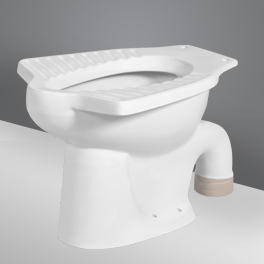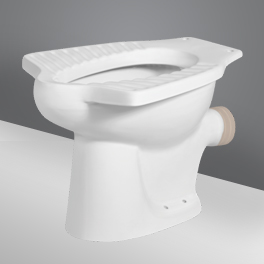
The ceramic water closet is a functional and decorative item that has evolved over the last century, with many designs changing with the changing styles of decorative elements and fashion. In this history, ceramic water closets are presented in the context of their history, with original illustrations and explanatory diagrams that show how the design and function of these items has changed throughout time. These details are helpful in determining the future trends in ceramic water closets.
The design of a water closet can vary, but it's essential to know the dimensions. Typical ceramic water closets are four feet high, a standard that isn't exceeded by many manufacturers. The height of the toilet seat is typically 400 mm (16 inches). If the toilet is taller than this, it will be made of a different material. It may also be made of plastic or another material, and the rim will be different.
Before the water closet became a fashionable bathroom accessory, the idea of using a separate toilet was far more practical. The first water closets in Britain were invented in 1592, with the first patent being registered in the late eighteenth century. Ancient civilisations, including the Egyptians, had water boxes, which are connected to the toilet and are used for waste disposal. Most water closets come with seats and covers made of plastic and have a shelf life of around 10,000 years.

Before the water closet was widely available, it was not a luxurious bathroom item. The first flush toilet was made in Britain in the late sixteenth century, and it soon spread across Europe. In 1791, Thomas Crapper of London patented the first flush toilet. In 1879, a German banker, Nicolay August Andresen, installed three "waterclosets" in the new town house of a wealthy man in Christiania. The water closets were imported from Britain and were referred to as "waterclosets" in his insurance ledger.
The water closet is a bathroom fixture. Its components are a plastic tank, a seat, and a cover. The water closet is connected to a WC and contains a few inches of liquid. It is a popular option for bathrooms because it is easy to clean and maintain. In addition, it looks great and is convenient for use. Its durability makes it an excellent choice for bathrooms. These units have many benefits.
When you buy a ceramic water closet, you will be happy you chose this style. The materials used are durable and easily resealable. A WC is also waterproof and can last for several decades. The water tank is the most important feature in a water closet. Its drainage and water pipeline connect to the water tank. Once the tank is filled, it is flushed out through the drainage. Its tank has a capacity between six and ten litres.
The water closets have been around for many years. This type of bathroom fixtures is a popular choice for people with special needs. It is easy to clean and requires less physical activity. The water used in water closets is cleaner than the conventional methods. This is one of the reasons why it is so popular. In addition to its aesthetic value, the WCs are easier to maintain and require less maintenance. They are also a great option for the elderly.

The ceramic water closets are easy to clean and maintain. The non-porous material helps keep the toilets sanitary, while making cleaning easier. They are an excellent choice for people with special needs. They are a good option for homes with children or small children. These restrooms are designed to accommodate people of all ages. You can select a toilet that matches your bathroom's style. You'll love the look and feel of this toilet.
Before you decide to install a new ceramic water closet, you should understand the basics of how it works. A ceramic water closet is a toilet that resembles a chamber pot. The bowl is large enough to hold a large amount of waste. The water closets have a recessed drain, which makes them easy to clean. It also has a level control device that keeps the water level in the cistern constant.
Make an Appoinment
Send us Message
Visit us at Address
Vagadiya Road, Thangadh - 363530,
Gujarat, India.
Gujarat, India.
© Copyright 2026, Orient Ceramics, All Rights Reserved.
Web Design & Development by Opal Infotech